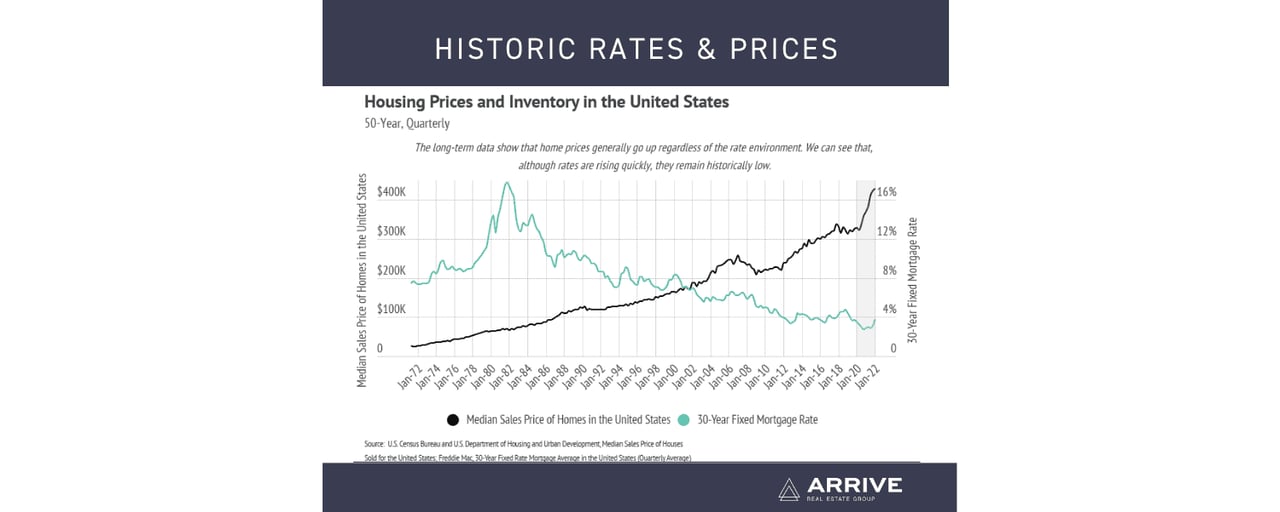Welcome to our May newsletter, where we’ll explore residential real estate trends in the East Bay and across the nation. As your local real estate experts, we feel it’s our duty to give you, our valued client, all the information you need to better understand our local real estate market. Whether you’re buying or selling, we want to make sure you have the best, most pertinent information, we’re here to support you.
Rising Rates May Not Normalize The Housing Market, But They May Help Inflation
After the Fed’s May meeting, Fed Chair Jerome Powell announced that they are raising their benchmark rate by 0.50%, the largest hike since 2000. Now that each increase will most likely be 0.50%, the market expects the federal funds rate to reach 2.75% to 3.00% by the end of the year, which would be the highest in 15 years. Although the fed funds rate doesn’t directly affect mortgage rates, the rate hike moves into the broader economy quickly. The rising rate environment will prevent a significant amount of money from entering the economy. Less money per month to spend on goods and services, bringing down aggregate demand when we multiply that reduction of disposable income across households.
Over the past four months, mortgage rates have moved about 2% higher for both 30- and 15-year fixed mortgages. Economists now estimate that 30-year mortgage rates could climb above 6% by mid-2022 and expect mortgage rates to top out at around 7% this year for prime borrowers. Demand is softening slightly now that the average mortgage rate jumped 2% in the past four months. The gradual rate increases are meant to avoid sending the economy into a recession.
In addition to rising rates, supply still drives home prices. In April, the housing supply ticked up ever so slightly, but it’s still 60% lower than the number of homes on the market in April 2020. We are entering what is traditionally the hottest time of year for the housing market with a record low supply of homes. Over the past four months, which had the lowest inventory on record, home prices increased 12%.
The Local Lowdown
Single-family home prices rose to all-time highs in April 2022 as short-term demand boomed as buyers tried to lock in lower mortgage rates. Mortgage rate hikes only lower demand in the long term. The factors now affecting home prices are anticipated to have mixed results, unlike the past two years when all factors caused prices to increase. Rising interest rates, which will hopefully curb the rising 40-year-high inflation rate, will make homes less affordable and dampen demand over the rest of the year. They may, however, also lower supply as current homeowners reconsider their plans to sell.
Many homebuyers are also home sellers, moving from one home to another. Newer homebuyers and homeowners who refinanced over the past two years locked in one of the lowest rates in history, making moving a more difficult financial decision. This could keep supply unseasonably low with fewer new listings coming to market, as we saw in April. Although the first quarter of 2022 had one of the lowest inventories on record, we were pleased to see that inventory increased, a trend that usually holds until mid-summer.
If you are considering buying a home, there aren’t many reasons to wait. Home prices and rates are still rising. The low supply continues to make the market extremely competitive. We are starting to see softening in demand, but not nearly enough to balance the supply side of the market. As always,
Arrive Real Estate Group remains committed to helping our clients achieve their current and future real estate goals. Our team of experienced professionals are happy to discuss the information we’ve shared in this newsletter. We welcome you to
contact us with any questions about the current market or to request an evaluation of your home.

